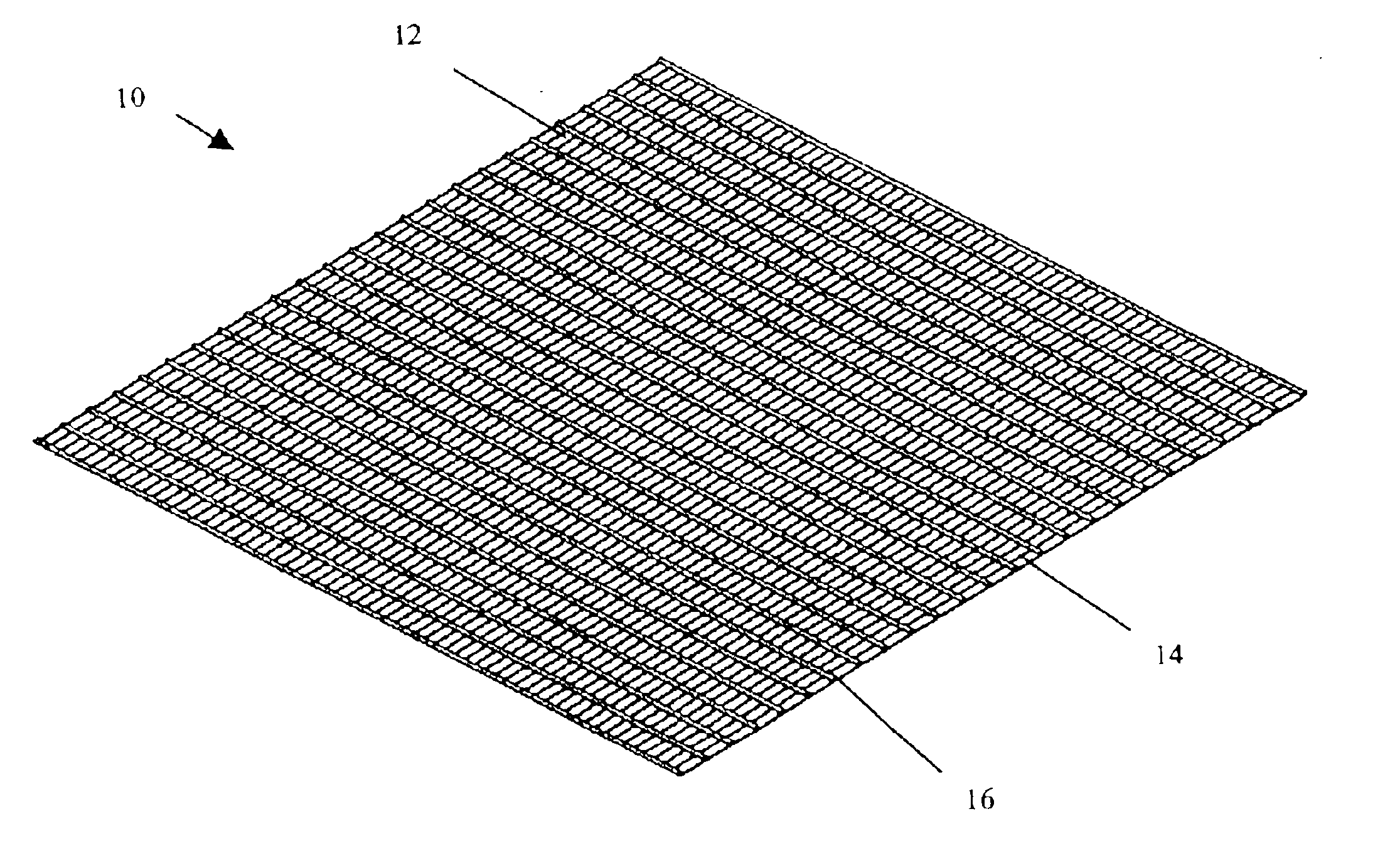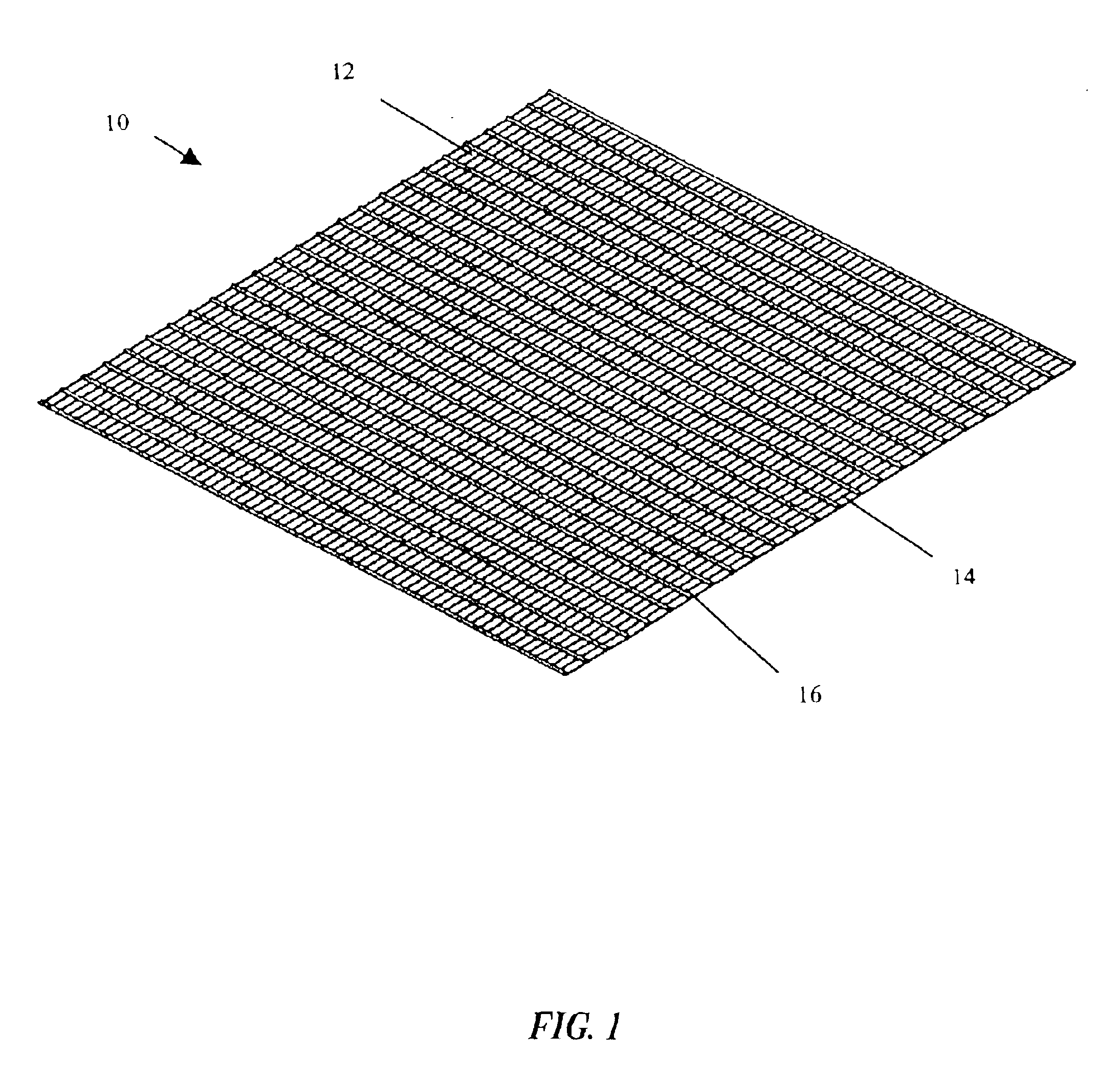Crosslinked polymer electrolyte membranes for heat and moisture exchange devices
a technology of electrolyte membrane and crosslinked polymer, which is applied in the direction of fuel cells, special tyres, primary cells, etc., can solve the problems of slow exchange or transport of water or some other highly polar liquid or gas between streams, rate-limiting exchange or transport of water or some other highly polar liquid or gas, etc., and achieves high permeability, exceptional adhesion, and low cost
- Summary
- Abstract
- Description
- Claims
- Application Information
AI Technical Summary
Benefits of technology
Problems solved by technology
Method used
Image
Examples
example 1
A cross-flow sensible and latent heat exchanger was constructed. The membranes in the exchanger were made by laminating a nylon non-woven reinforcement to a layer of a sulfonated styrene-olefin polymer. The membranes were stacked on top of one another using a PVC spacer with an applied adhesive. The PVC spacers were oriented at 90 degrees to each other on alternating layers. Every other layer in the core had the same flow direction: 1, 3, 5, 7 etc. had the same flow direction while 2, 4, 6, 8, etc. had a flow direction that was oriented 90 degrees. The edges of each layer in the core were sealed with double-sided adhesive tape. The cross-flow exchanger was placed in a test apparatus where the flow rate, temperature, and moisture of two airflows could be controlled. One air flow had approximately a 90° F. temperature at a relative humidity of 55% of saturation. The other airflow was held at 70° F. and a relative humidity of 50% of saturation. The exchange of sensible and latent heat ...
example 2
Organic-Inorganic Hybrids as Heat and Moisture Exchange Membranes
Materials
1) The two base partially sulfonated styrene-olefin copolymers A and B were synthesized by our lab were used in the examples. Polymer A is a sulfonated Ehtylene / Stryene Statistical copolymer. Polymer B is a sulfonated Stryene / Ethylene / propylene taped copolymer. Both polymer A and B were prepared and characterized using procedures analogous to those contained within U.S. Pat. No. 6,413,298. The styrene content of the polymer A was 76 wt-% and the sulfonation content of this polymer was 34 mol-% with respect to moles of styrene present. The styrene content of the polymer B was 57 wt-% and the sulfonation content of this polymer was 35 mol-% with respect to moles of styrene present. Both the solutions of polymeric resin A and B were prepared by dissolved the solid polymer respectively in n-propanol over a period of time with good mixing until homogeneous solution obtained.2) All the coupling agents were obtained ...
example 2.1
General Procedure
Add tetraalkoxysilane such as tetraethyl orthosilicate (TEOS) or organosilane such as vinyltriethoxysilane (VTES), etc. into the polymer A or B solution with vigorously stirring at 40° C. for 30 min until the polymer solution became homogeneous. Neat membranes (˜1 mil) were cast from the solution form a gel in n-propanol after 20 min or so at room temperature. The membrane was further heat treatment at different temperature vs times. The initial composition and the experimental condition used are summarised in Table 1. The membranes were evaluated on gel retention, water uptake, and moisture transfer test and the result were reported in Table 2.
TABLE 1Initial composition of the studied mixture inpolymer / silane system and experimental condition usedSam-pleSulf. PolymerTEOSVTESVTMSHeat T(C.) andNo(wt-%, g))(g)(g)(g)time1A(13.0%, 50 g)2.1110 C., 24 h2A(13.0%, 50 g)1.6110 C., 16 h3A(13.0%, 50 g)1.0120 C., 5 h4A(13.0%, 50 g)1.680 C. / 30 mmHg, 5 h5A(13.0%, 50 g)1.6160 C., ...
PUM
| Property | Measurement | Unit |
|---|---|---|
| Time | aaaaa | aaaaa |
| Percent by mass | aaaaa | aaaaa |
| Percent by mass | aaaaa | aaaaa |
Abstract
Description
Claims
Application Information
 Login to View More
Login to View More - R&D
- Intellectual Property
- Life Sciences
- Materials
- Tech Scout
- Unparalleled Data Quality
- Higher Quality Content
- 60% Fewer Hallucinations
Browse by: Latest US Patents, China's latest patents, Technical Efficacy Thesaurus, Application Domain, Technology Topic, Popular Technical Reports.
© 2025 PatSnap. All rights reserved.Legal|Privacy policy|Modern Slavery Act Transparency Statement|Sitemap|About US| Contact US: help@patsnap.com



